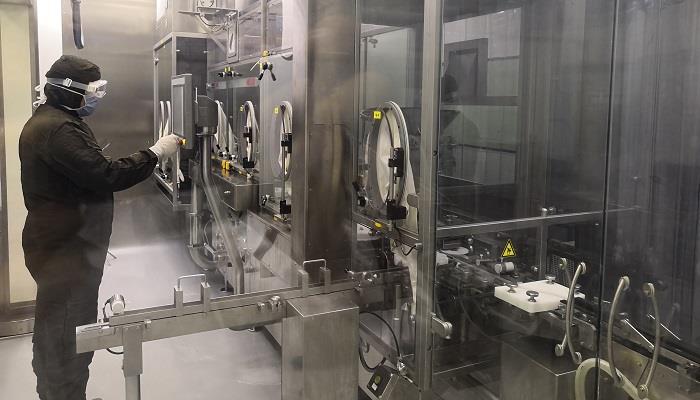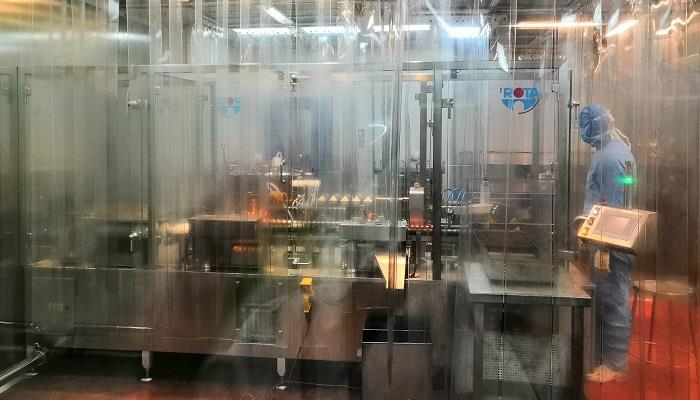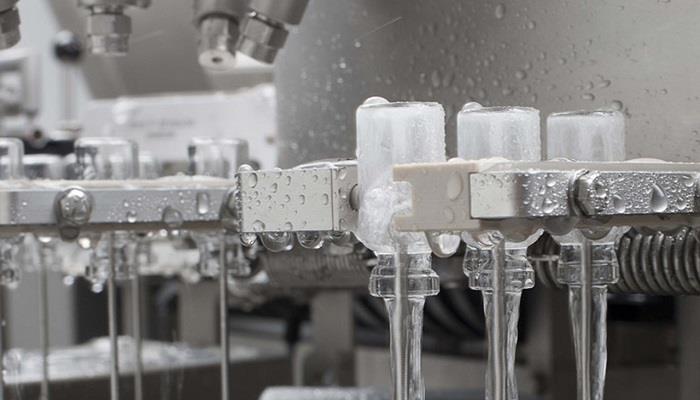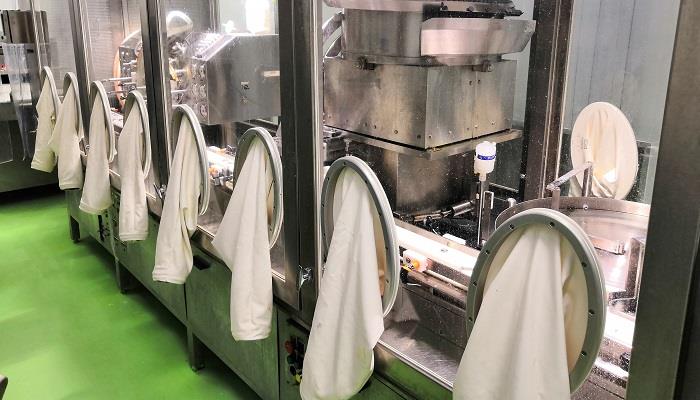EIPICO is Unique with its 9 sterile products areas, which are the Largest and Most Advanced, in Egypt and in the Middle East and North Africa (MENA) Region.
It is characterized by its very strict procedures in the kind, training and apparel of the personnel working in its sterile products area in addition to the treatment of air whose degree of purity reaches 99.9997% particulate-free in order to guarantee a high quality sterile product.
The sterile products area were modernized and expanded, with the antibiotics sterile products area being divided into two separate areas; the penicillin preparations packing area and the cephalosporin preparations packing area.
Cephalosporin antibiotics production area compromise two production departments obtaining world health organization (WHO) license in 2013, confirmed in 2018 as the first cephalosporin production area in MENA.
Being the Largest and Most Advanced sterile products area in the MENA region with about 19 fully automated high-speed production lines for different sterile products like ophthalmic suspensions, sterile injectables, and lyophilized powders for injection, Aseptic Filling of Sterile Drugs is one of the most critical processes in pharmaceutical manufacturing.
It is uniquely challenging because it requires careful planning, thoroughly-trained personnel with the appropriate mindset, and specialized facilities/equipment to properly execute.
Ensuring sterility is not a trivial task, and failure can have catastrophic and even life-threatening consequences for a patient.
The production of sterile preparations should be carried out in clean areas, entry to which should be through airlocks for personnel and/or for equipment and materials. Clean areas should be maintained to an appropriate standard of cleanliness and supplied with air that has passed through filters of the required efficiency.
The various operations of component preparation (such as those involving containers and closures), product preparation, filling and sterilization should be carried out in separate areas within the clean area.
Ultimately, the goal of an aseptic manufacturing process is to completely eliminate opportunities for contamination, whether it be from microorganisms or particulates that could harm a patient when administered.
Any of the following can be sources of contamination in aseptic processing:
Personnel,
Cleanroom Facilities,
Container Systems,
Equipment and Processes.
The success of aseptic processing relies on mitigating contamination from each of these sources.
Personnel

According to the FDA, personnel are a potentially major source of contamination.
Any personnel who enter an aseptic manufacturing area is thoroughly trained on cleanroom procedures and behaviour. While aseptic processing and sterile fill-finish operations are designed to limit human interventions, the actions of personnel in the cleanroom go a long way towards ensuring product sterility.
Our training program covers:
Aseptic technique, Cleanroom behaviour (e.g. moving slowly and deliberately, keeping the entire body out of the path of unidirectional airflow), Microbiology, Hygiene, Gowning, Specific written procedures covering aseptic manufacturing area operations.
Ongoing training and evaluations of cleanroom personnel and procedures are done to ensure products are not exposed to contamination risks. Many of the same principles apply to laboratory personnel who are testing aseptic samples and generating microbiological data from the cleanrooms, as they must also avoid contaminating the samples.
Cleanroom Facilities

Aseptic processing takes place in cleanrooms that are designed to accommodate the flow of personnel, materials, and equipment during the manufacturing process. This is referred to as a “cascading” design, wherein in the level of air quality increases as you move closer to the aseptic core of the facility (a Class 100 space). The flow of personnel, materials, and equipment should start in supporting areas where gowning, nonsterile preparation and formulation activities can take place.
The highest level of air quality is maintained in the Critical Area, which has an ISO 5 Certification (Class 100). Activities conducted in the Critical Area include manipulations (e.g. aseptic connections, sterile ingredient additions) of sterile materials prior to and during filling and closing operations. Because the drug and components are exposed to the environment, it is essential that the air quality in this space is stringently controlled, constantly maintained, and continuously monitored.
Air quality is maintained via specialized heating, ventilation, and air conditioning systems. These are complex systems that supply high efficiency particulate air (HEPA) in an unidirectional flow to sweep particles away from the fill-finish area and minimize contamination potential.
Container System

Aseptic processing can be applied to a range of container systems made of either glass or plastic, including vials, bottles, and ampoules.
Glass containers typically undergo a pre-sterilization process to remove foreign matter. The process consists of a series of wash and rinse cycles in high purity water (WFI if the container is for a parenteral drug product). The containers are then typically subjected to dry heat for sterilization and to destroy bacterial endotoxins (depyrogenation). The exact parameters of sterilization are based on validation studies which vary sterilizing conditions and measure the uniformity of sterilization under different container loading conditions.
Equipment and Process

Process design for aseptic manufacturing focuses on minimizing exposure of sterile items to contamination hazards. This means that processes should flow in a logical manner and equipment should be arranged in a way that minimizes unnecessary activities and movement by personnel. Because interventions by personnel can increase the risk of contamination, sterile fill-finish equipment is often designed to minimize the need for human interaction. Many vial and syringe fillers come equipped with in-line weight checking, allowing operators to monitor the weight of products without contacting the drug product.
The use of barrier systems can further protect sterile products from contamination. The strictest example of this is the use of aseptic processing isolators, which separate the materials inside them from the external cleanroom environment and minimize exposure to personnel. Operators manipulate items in the isolator via gloves or half-suits that maintain the barrier with the external environment. Fillers may also be equipped with Restricted Access Barrier Systems (RABS), which also provide a physical barrier to the outside environment and utilize glove ports for interaction with products in the filler. RABS systems are appealing due to their reduced capital investment and start-up time compared to aseptic processing isolators.